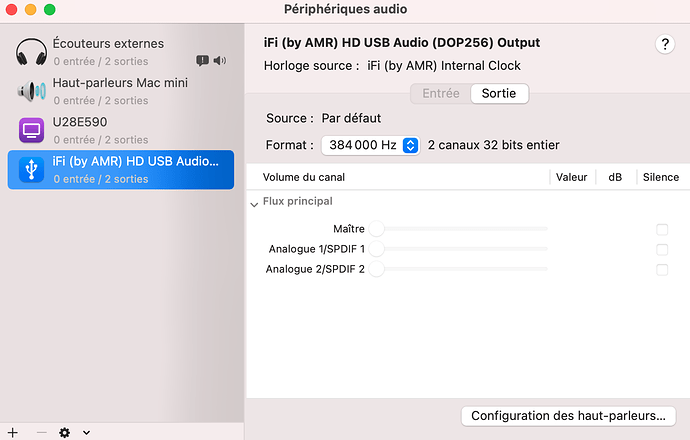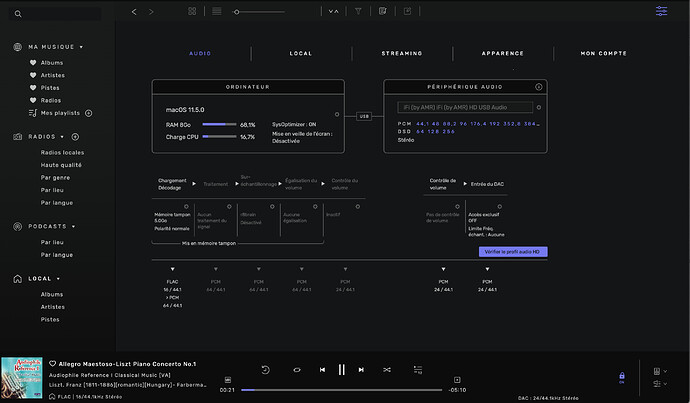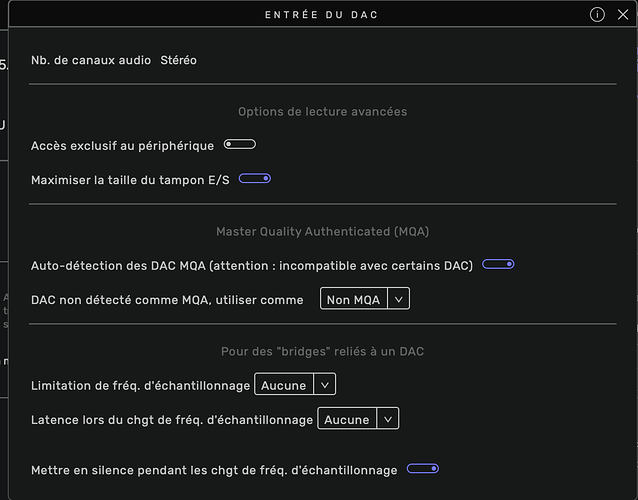It does not bug me at all. I was simply pointing out an error. And yet some folks have gone through extraordinary lengths in an attempt to explain it is not an error.
It is an choice made years ago. The question has been asked many times. The answers is always the same.
It simply does not matter.
But like bitracer said: make an request to change this and maybe this time the team wil put it in the shortlist.
If it does not matter, then why would Studio be designed to report the information?
In fact @Antoine has said to me: “we send the track at the maximum bit-depth possible.” This is simply false.
I am not submitting a request for a new feature, I am simply reporting an error.
I don’t care about it. But if it doesn’t matter, it will be better to not display anything rather than displaying a false information.
I’m not sure if it is false information. Somewhere in the communication between DAC and Audirvana these are the samplerate and bitdepth that are determined as actual values.
If I’m not mistaken, Audirvana also indicates at what sample rate an MQA stream is resampled in the DAC and not how it is sent from Audirvana. It has something to do with the feedback coming from the DAC and not what Audirvana is doing.
Hopefully Damien can explain how this is done.
I played a MQA track, and I don’t see an indication in AS how it was resampled in the DAC. The only information that appears is how AS supposedly sent it to the DAC.
EDIT
I don’t see such information neither in the screenshot of the link that you posted.
My mistake. I thought I saw it somewhere recently.
Hopefully Damien can explain his choice and vision soon.
Maybe, it is a peculiarity with ASIO drivers? On the other hand, Windows “knows” the capabilities of my DAC – Windows displays the various bit-depth / bit-rate combinations of my DAC in the Sound Control Panel drop down list.
To check if the bit-depth your DAC shows is arbitrary, if you’re curious.
Now, after lucretius proved that the display of the bit-depth of AS is not reliable, I watched more carefully what happens for me.
I have a 32 Bit Dac and macOS recognizes it as such.
Until yesterday, AS was displaying an output of 32 Bit to my DAC, whatever the bit-depth of the PCM track that was played.
Today, suddenly, AS displays an output of 24 Bit. In this screenshot, I play a CD quality 16/44.1 track and for some strange reason, AS displays an output of 24/44.1 instead of 32/44.1.
Even more strange. In this screenshot, AS plays a 32/384 WavPack track, but the output that is displayed is of 24/384.
In the sound path, the 32 Bit track is transformed to 64/384, and then to 24/384 for output to the DAC. Why AS downgrades the original 32 Bit-depth of the track?
This behavior of AS is completely new. What should I believe?
Check if you have „Limit to 24bit“ selected.
I don’t see a setting in AS that limits the bit-depth of the output.
Where is it?
EDIT
@lucretius what do you say about this? Do you observe such behavior of AS on your PC?
There’s no such setting.
You were worried about bit-perfect, without a reason, when the display was of 32/44.1 for a 16/44.1 track.
If the display of a 24/384 output for a 32/384 track is correct, you are seeing a non bit-perfect playback.
In the output device settings, 2nd from the bottom (Bitdepth maximum 24bit - instead of 32).
Audirvana engine is 64bit (software volume processing), that’s why you see 64bit there.
It’s DAC dependent. Which DAC do you have? Are you on Windows or Mac?
I’m using a M1 Mini on macOS Big Sur and my Dac is an iFi micro iDSD Black Label.
It’s not unusual to show different bit depths on different resolutions. Some interfaces show 16bit when playing 16/44.1 or 16/48 and 32bits when playing anything above that. I have one such DAC.
Where did you get the track in 32bit?
I never observed a player, and I have 7 audiophile players on my Mac and my PC, that display a wrong bit-depth or a wrong bit-rate for its output.
The origin of the 32/384 WavPack track is a vinyl rip that was done years ago, and that was played on many players.





